Olson Kundig refines the art of the perfect American cabin
Seattle-based architects Olson Kundig are experts in the art of composing the ideal contemporary cabin – an aspirational yet modest retreat. Here, we visit five of their projects within the genre

The cabin perfectly captures the zeitgeist of our times; aspirational yet modest, it is the ideal place to practice self-isolation in the heart of nature. Seattle-based architects Olson Kundig have made the contemporary cabin one of their specialties and the firm seemingly has no shortage of clients keen to make an architectural impact on the stunning landscapes of the Pacific North-West. The studio has released numerous projects within this genre, both in their home state of Washington and elsewhere, giving us all an excuse to contemplate a very different pace of life. These five schemes are the perfect embodiment of the cabin typology as displayed by the American architecture practice's powerful approach.
Vermont Cabin, Vermont
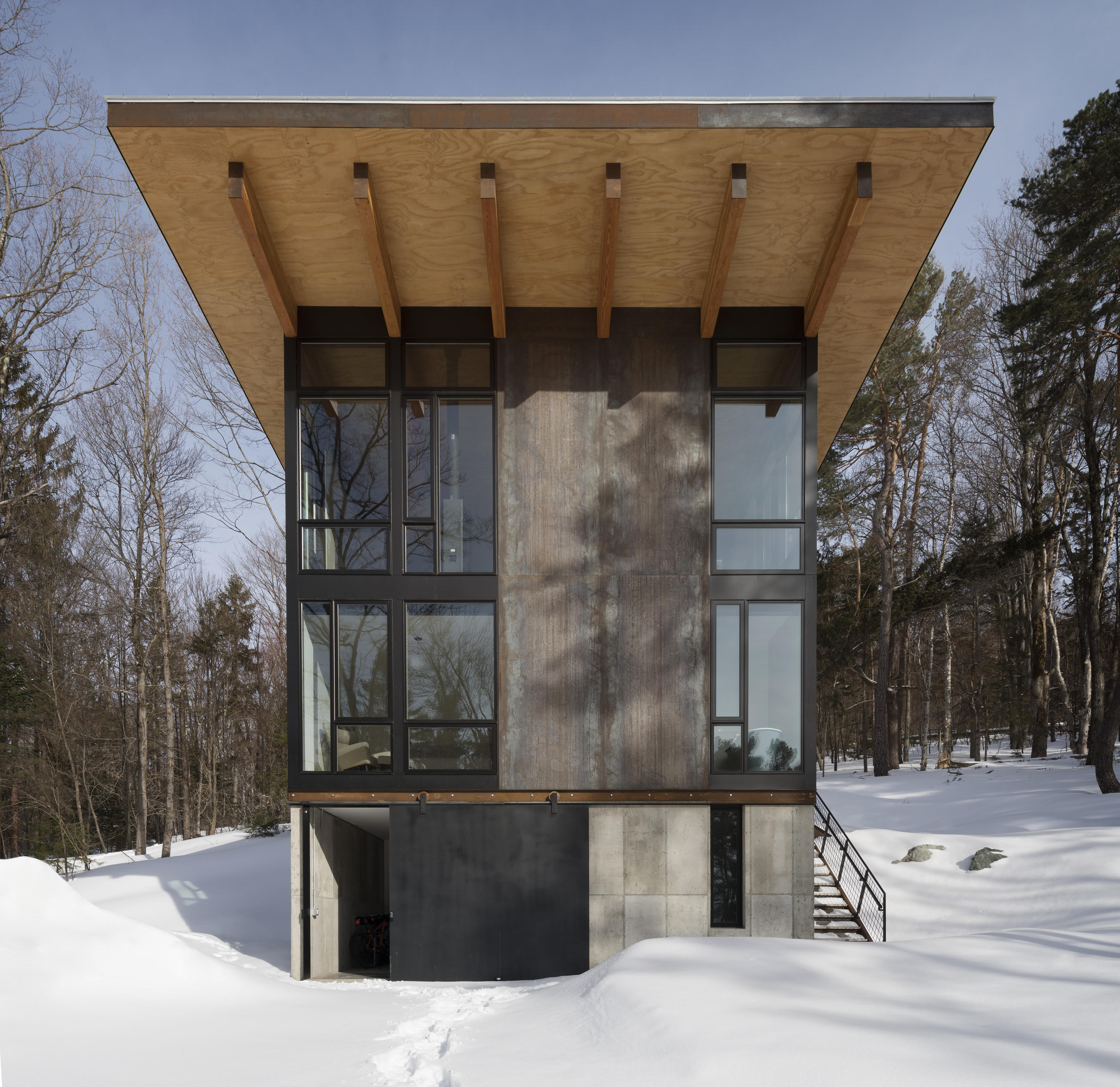
The archetypal object in the landscape, this 750 sq ft cabin is functionally elegant, set amongst pines and maples on a hillside site in rural Vermont. Using Olson Kundig’s signature palette of steel, wood and concrete, the cabin is set across three levels. Despite its small footprint, the plan incorporates three bedrooms, with the main living space up amongst the trees. Here there are large expanses of glass providing views to the distant Green Mountains that give the state its name, all set beneath an exposed wooden ceiling. The steel panels on the exterior are designed to weather naturally and there’s copious amounts of poured and cast concrete inside and out to give the cabin a hard-wearing, utilitarian appearance.
City Cabin, Seattle, Washington
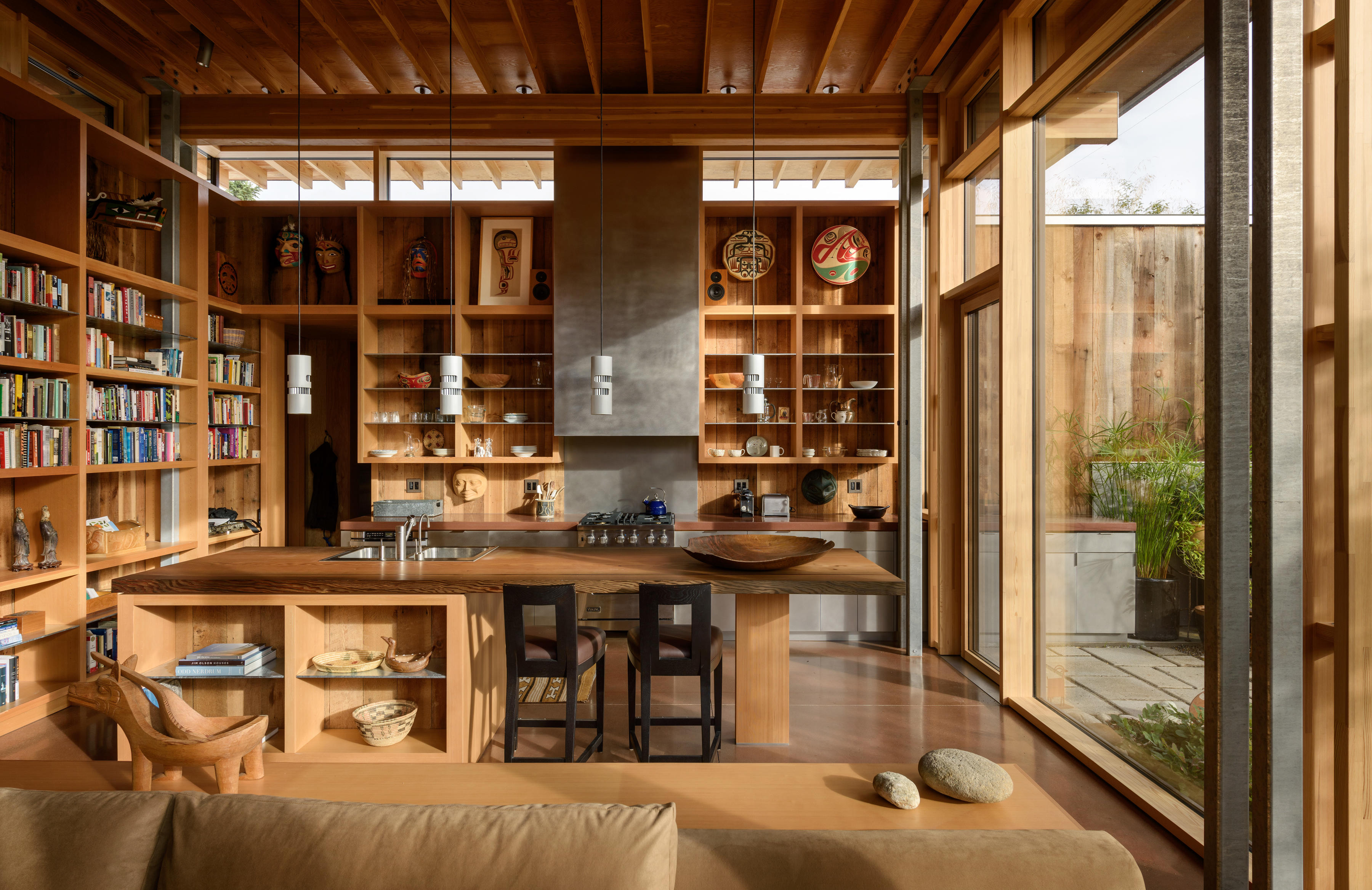
An urban retreat in the heart of Seattle, this generous private house takes the ethos and aesthetic of the rural cabin and transplants it into an urban setting. Ultra-sustainable, with photovoltaic panels and an air-to-water heat pump, the City Cabin is set amongst a carefully planted garden that maximise privacy and the sense of being amongst nature. Big windows bring the garden into the living spaces, while the extensive use of timber cladding inside creates a warm, natural environment. The floorplan is arranged around a central living space with towering 16-foot ceilings. Exterior walls are clad in reclaimed fir siding, and a green roof completes the low-impact design strategy.
Agate Pass Cabin, Washington
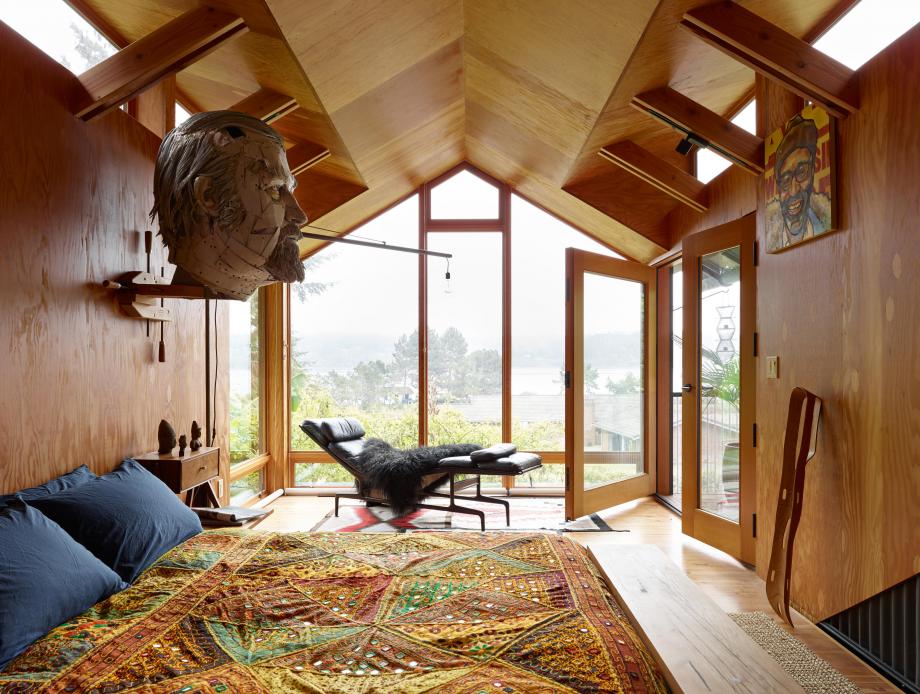
Located on Washington’s Olympic Peninsula, the Agate Pass Cabin Washington was designed and built by Alan Maskin, principal and owner of Olson Kundig. Incorporating an existing 1930s cabin, the project is a patchwork of restoration and innovation, designed to accommodate Maskin’s art and furniture collection. The 1930s structure was expanded and enhanced, with all surplus original wood recycled into new cabinetry and ceilings. The demarcation between old and new is laid bare, with a second storey added, ceilings raised and a roof-terrace added. A new staircase with striking orange Plexiglass risers leads to the new rooms. Maskin not only designed the built-in furniture, but also the surrounding gardens, creating a truly bespoke place in which to live and work.
[falcon]
False Bay Writers Cabin, Washington
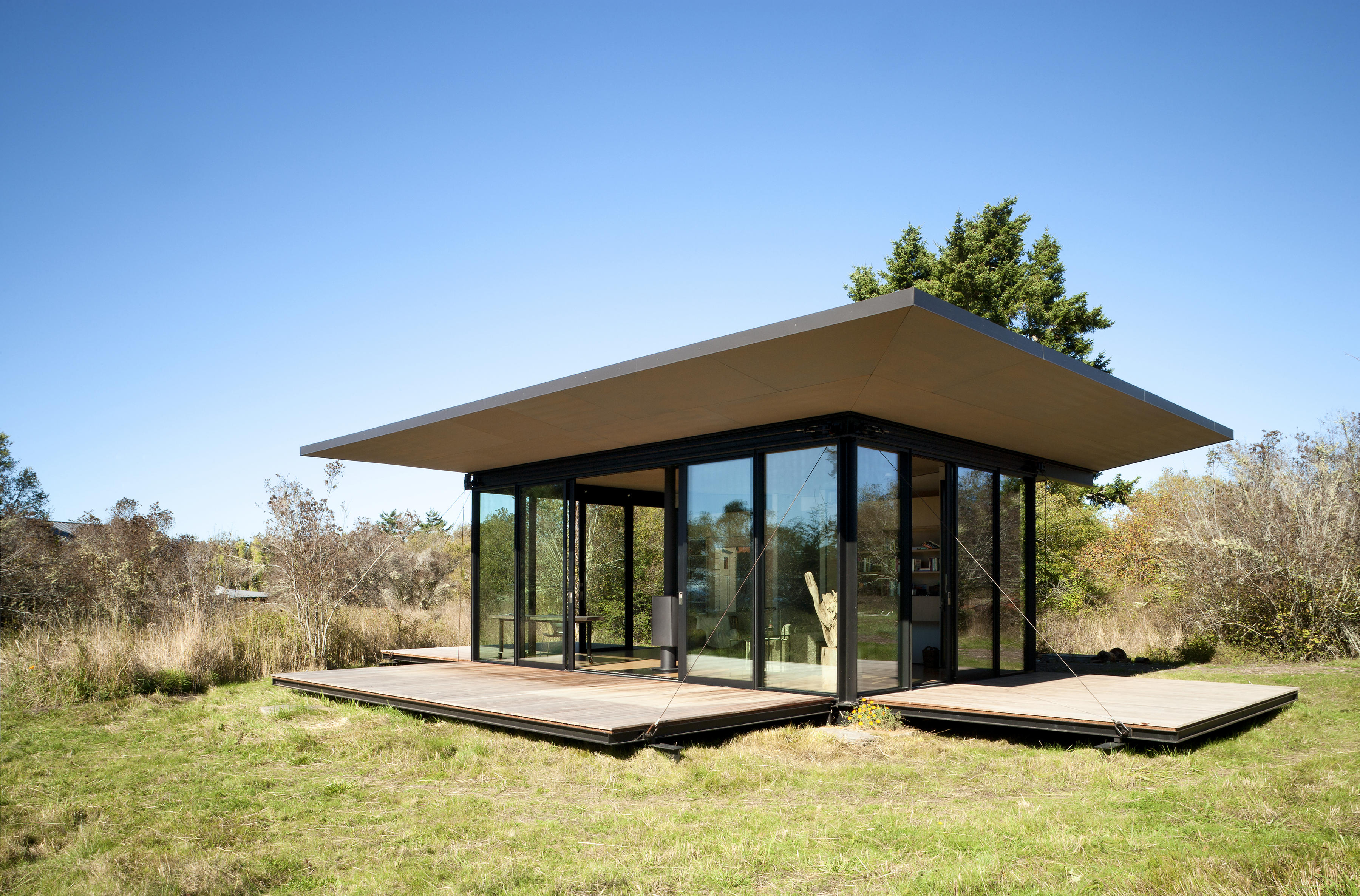
Set amongst the rich eco-system of San Juan Island in the straits to the north-west of Seattle, this modest 500 sq ft cabin is designed to be closed up and minimal when not in use, with three vast wooden slat decks that can be raised up to shutter off the glass walls. Using Olson Kundig’s trademark love of traditional mechanical systems, the shutters are operated via winches, pivots and lead weights. The cabin serves as a private writer’s retreat and guest cottage. Arranged as one single room with pared back finishes, a timber ceiling and a central stove, there’s also a small bathroom and kitchenette and external kayak store. The fold-away Murphy bed turns the reflective writing space into a guest cottage to the main house.
Chicken Point Cabin, Idaho
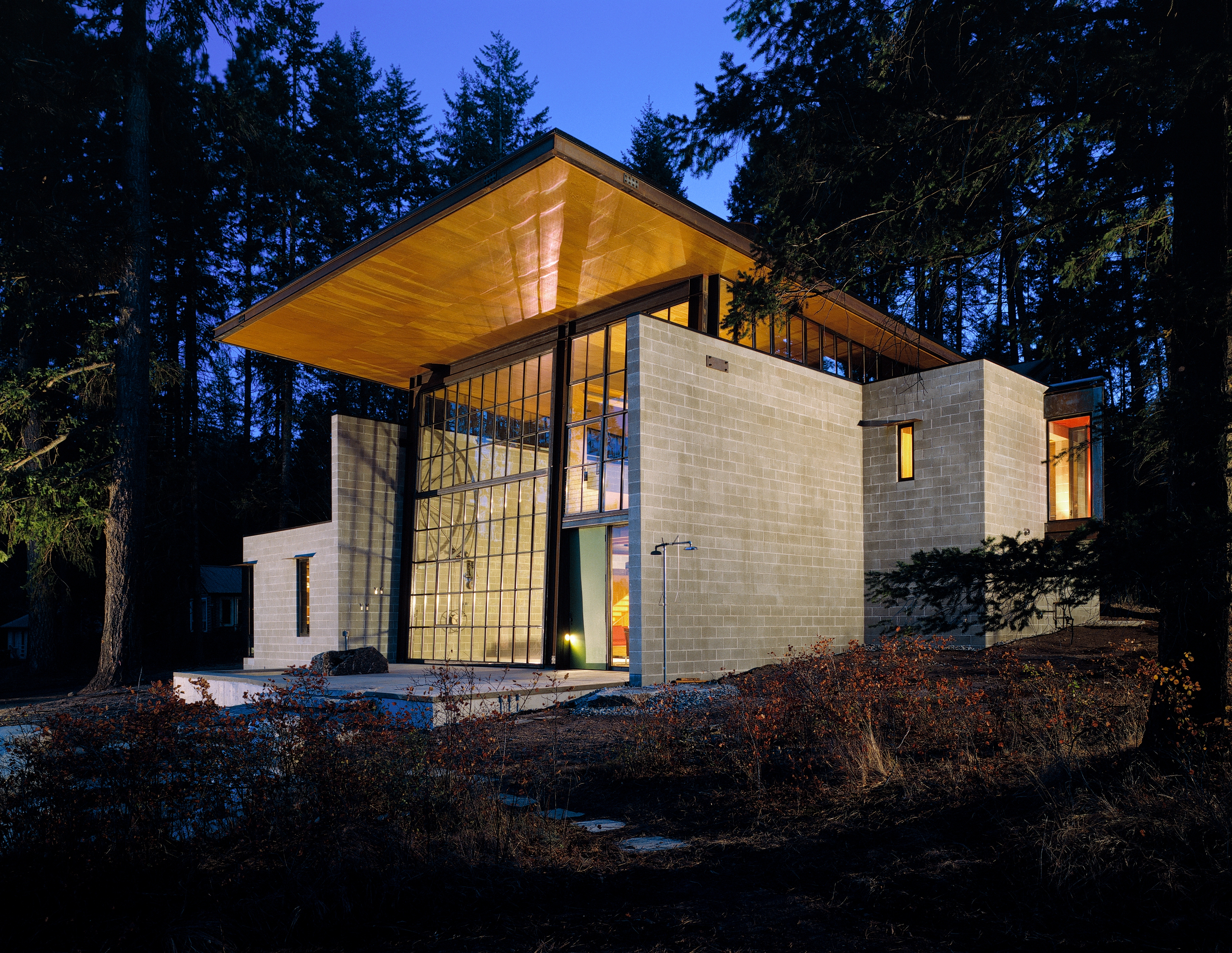
Set by the edge of a picturesque lake in Northern Idaho, Chicken Point Cabin is one of the studio's most iconic projects within the typology. Olson Kundig's Tom Kundig spreadheaded this project, which balances a pared-down, back-to-basics approach, with a rich materiality, clever craft and technology and a strong connection with nature. The structure is a simple concrete black box, broken up by a large window on one side, which offers dramatic views of the nature and lake beyond. When pivoting the glazed element open (using a specially designed hand-operated mechanism), the whole interior becomes at one with its leafy context; the perfect architectural escape.
Receive our daily digest of inspiration, escapism and design stories from around the world direct to your inbox.
INFORMATION
Jonathan Bell has written for Wallpaper* magazine since 1999, covering everything from architecture and transport design to books, tech and graphic design. He is now the magazine’s Transport and Technology Editor. Jonathan has written and edited 15 books, including Concept Car Design, 21st Century House, and The New Modern House. He is also the host of Wallpaper’s first podcast.
-
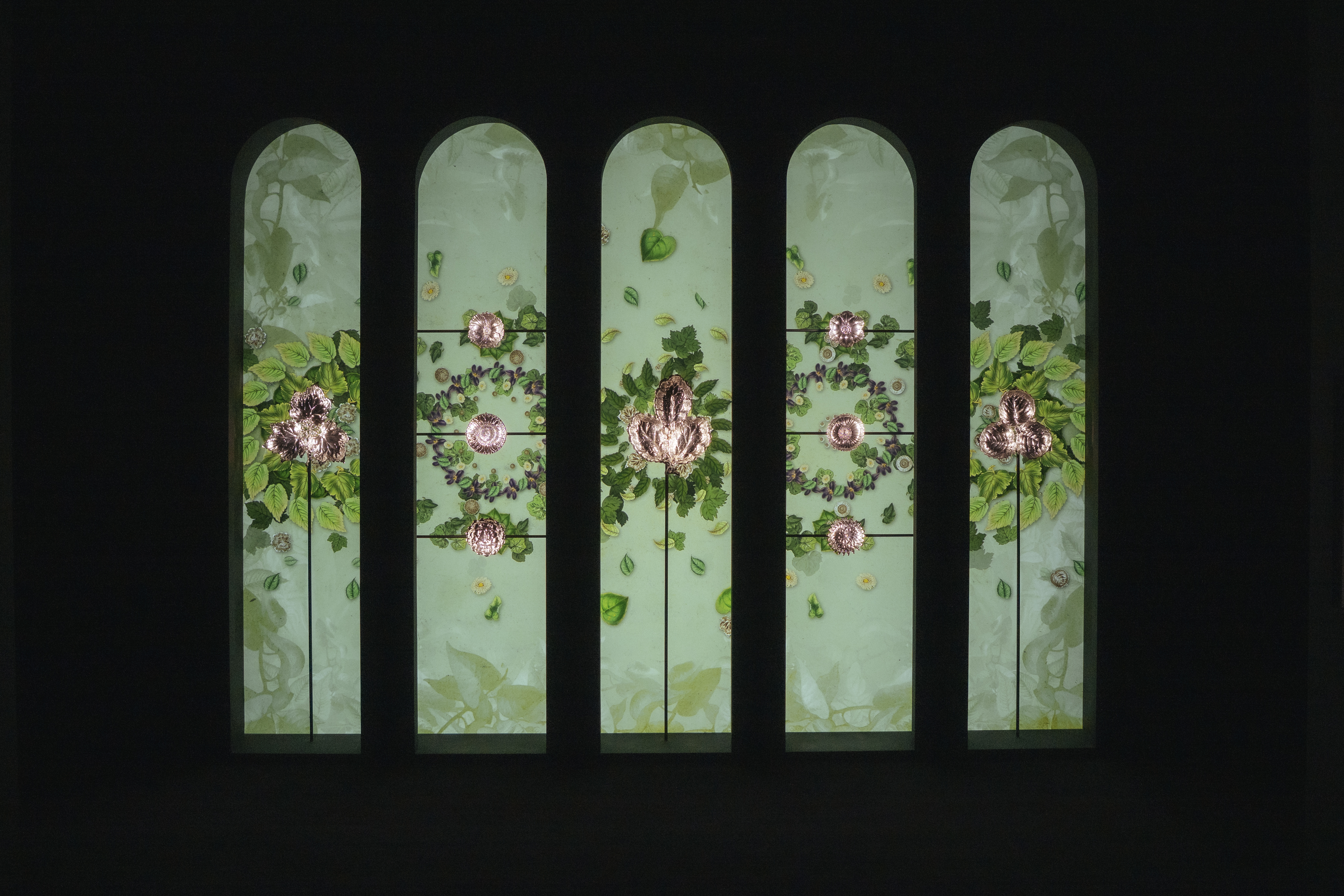 Dive into Buccellati's rich artistic heritage in Shanghai
Dive into Buccellati's rich artistic heritage in Shanghai'The Prince of Goldsmiths: Buccellati Rediscovering the Classics' exhibition takes visitors on an immersive journey through a fascinating history
-
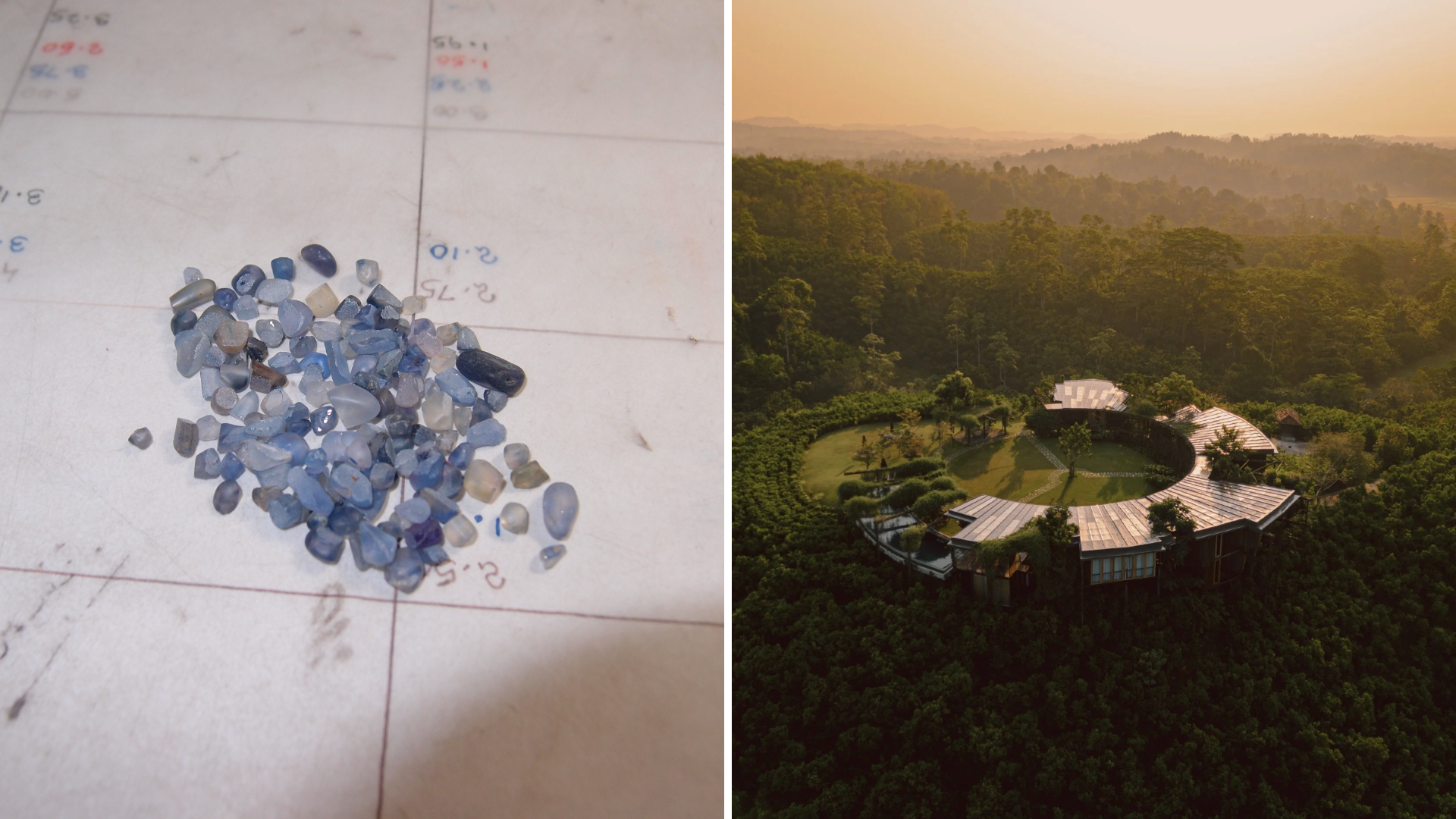 Love jewellery? Now you can book a holiday to source rare gemstones
Love jewellery? Now you can book a holiday to source rare gemstonesHardy & Diamond, Gemstone Journeys debuts in Sri Lanka in April 2026, granting travellers access to the island’s artisanal gemstone mines, as well as the opportunity to source their perfect stone
-
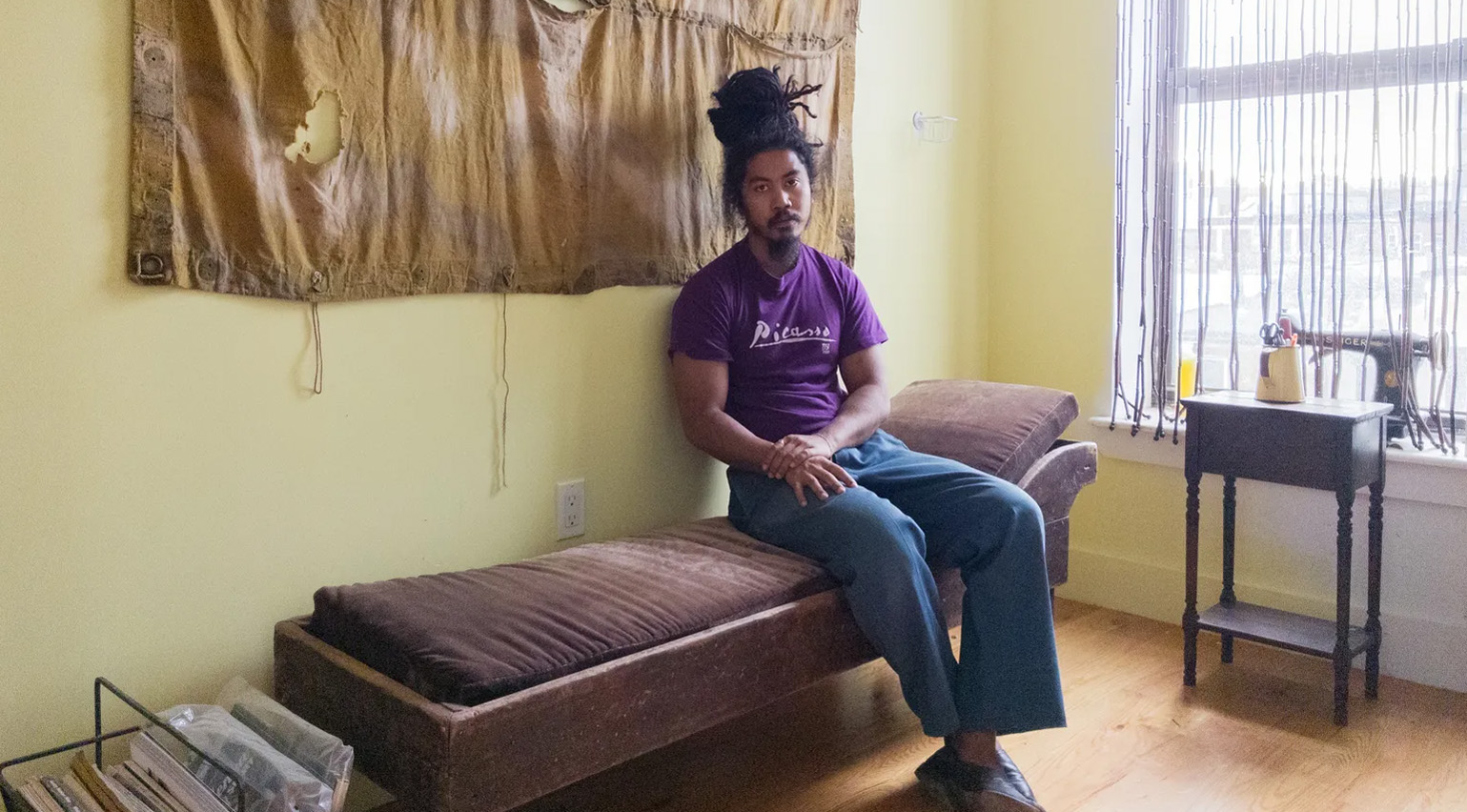 The rising style stars of 2026: Connor McKnight is creating a wardrobe of quiet beauty
The rising style stars of 2026: Connor McKnight is creating a wardrobe of quiet beautyAs part of the January 2026 Next Generation issue of Wallpaper*, we meet fashion’s next generation. Terming his aesthetic the ‘Black mundane’, Brooklyn-based designer Connor McKnight is elevating the everyday
-
 Step inside this resilient, river-facing cabin for a life with ‘less stuff’
Step inside this resilient, river-facing cabin for a life with ‘less stuff’A tough little cabin designed by architects Wittman Estes, with a big view of the Pacific Northwest's Wenatchee River, is the perfect cosy retreat
-
 Remembering Robert A.M. Stern, an architect who discovered possibility in the past
Remembering Robert A.M. Stern, an architect who discovered possibility in the pastIt's easy to dismiss the late architect as a traditionalist. But Stern was, in fact, a design rebel whose buildings were as distinctly grand and buttoned-up as his chalk-striped suits
-
 Own an early John Lautner, perched in LA’s Echo Park hills
Own an early John Lautner, perched in LA’s Echo Park hillsThe restored and updated Jules Salkin Residence by John Lautner is a unique piece of Californian design heritage, an early private house by the Frank Lloyd Wright acolyte that points to his future iconic status
-
 The Stahl House – an icon of mid-century modernism – is for sale in Los Angeles
The Stahl House – an icon of mid-century modernism – is for sale in Los AngelesAfter 65 years in the hands of the same family, the home, also known as Case Study House #22, has been listed for $25 million
-
 Houston's Ismaili Centre is the most dazzling new building in America. Here's a look inside
Houston's Ismaili Centre is the most dazzling new building in America. Here's a look insideLondon-based architect Farshid Moussavi designed a new building open to all – and in the process, has created a gleaming new monument
-
 Frank Lloyd Wright’s Fountainhead will be opened to the public for the first time
Frank Lloyd Wright’s Fountainhead will be opened to the public for the first timeThe home, a defining example of the architect’s vision for American design, has been acquired by the Mississippi Museum of Art, which will open it to the public, giving visitors the chance to experience Frank Lloyd Wright’s genius firsthand
-
 Clad in terracotta, these new Williamsburg homes blend loft living and an organic feel
Clad in terracotta, these new Williamsburg homes blend loft living and an organic feelThe Williamsburg homes inside 103 Grand Street, designed by Brooklyn-based architects Of Possible, bring together elegant interiors and dramatic outdoor space in a slick, stacked volume
-
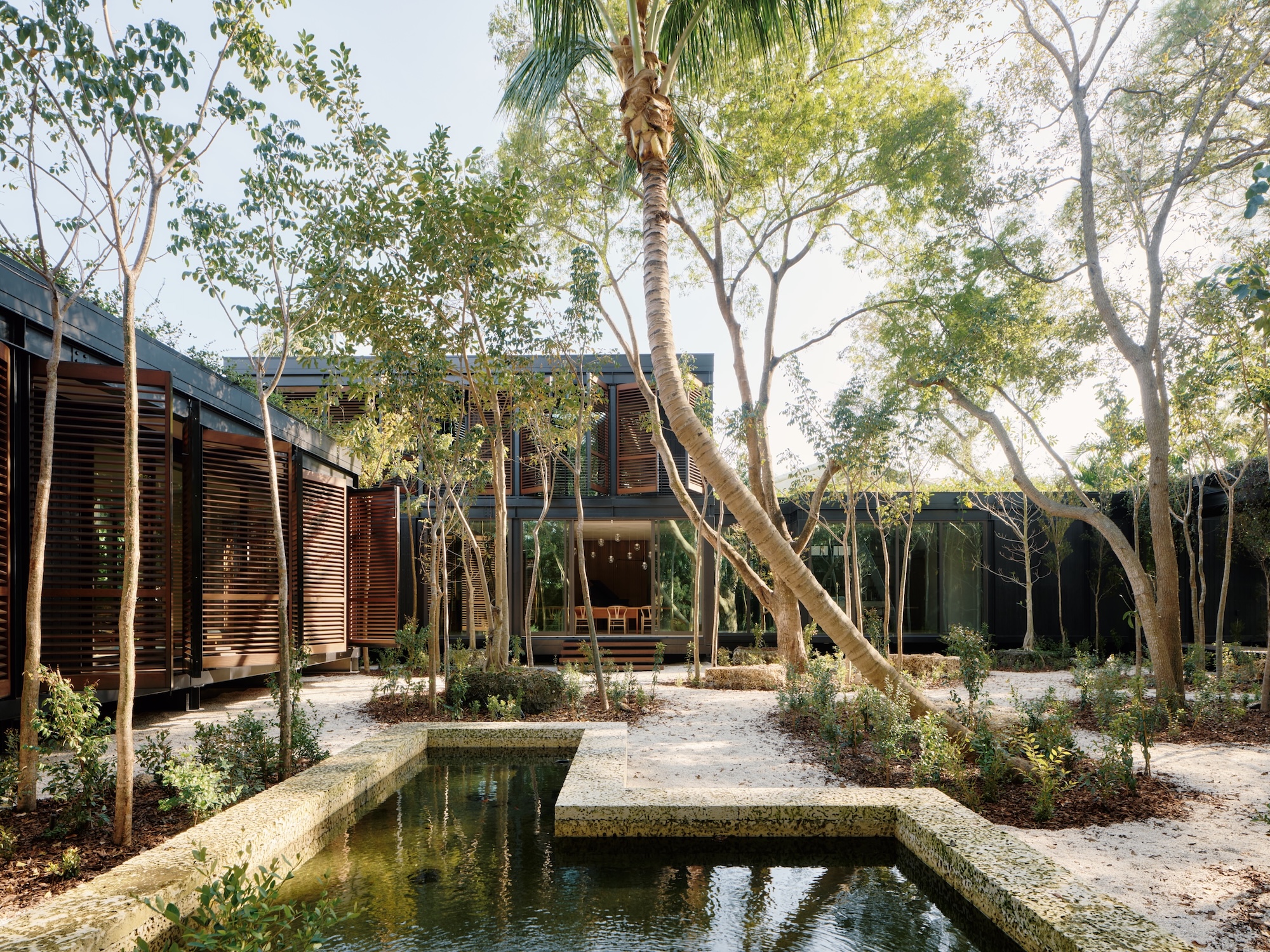 This ethereal Miami residence sprouted out of a wild, jungle-like garden
This ethereal Miami residence sprouted out of a wild, jungle-like gardenA Miami couple tapped local firm Brillhart Architecture to design them a house that merged Florida vernacular, Paul Rudolph and 'too many plants to count’